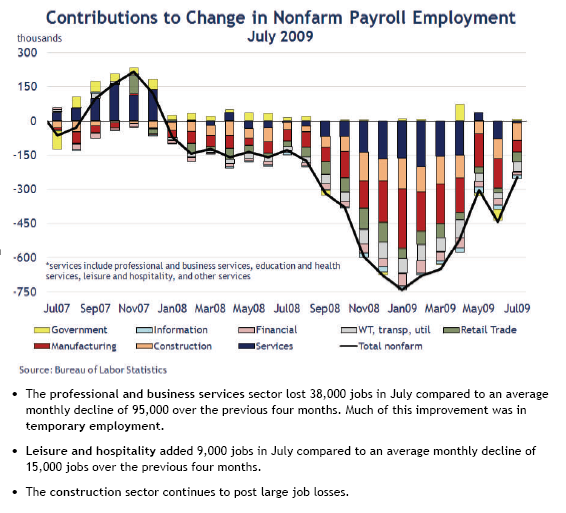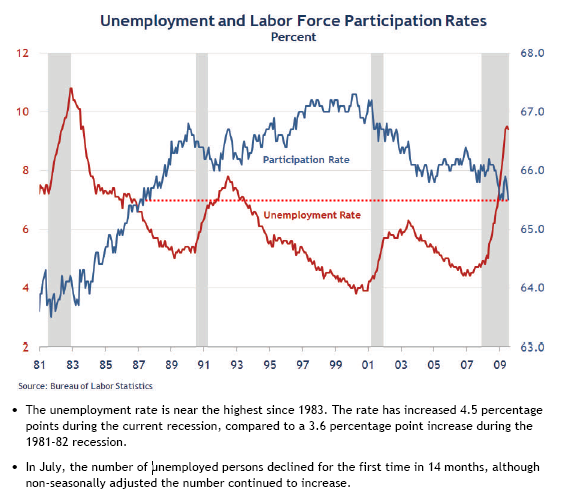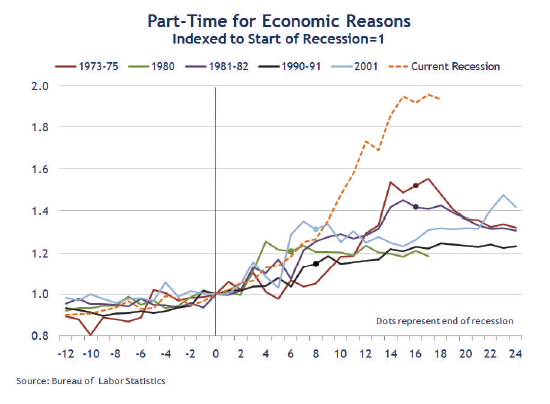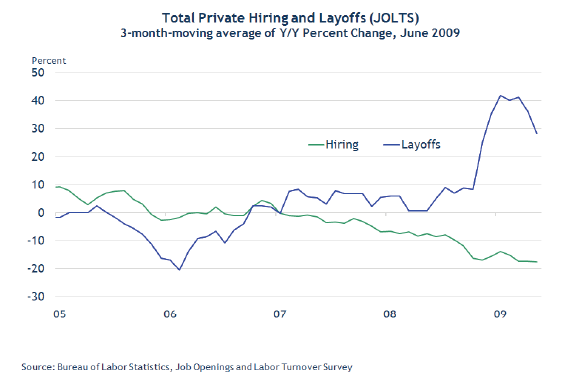The report, based on an analysis of federal jobs data, found that state and local governments steadily added jobs for eight months after the recession began in December 2007, with their employment peaking last August. State and local governments have since lost 55,000 jobs, but from the beginning of the recession through last month they gained a net of 110,000 jobs, the report found, in part because of the federal stimulus program.
Government jobs are always more stable than private sector jobs during downturns, but their ability to weather the current deep recession startled Donald J. Boyd, the senior fellow at the institute who wrote the report.
“I am a little surprised at the fact that state and local government has remained as stable as it has in the nation as a whole, given the depth of the current recession,” Mr. Boyd said in an interview.
The report offered several possible explanations for the disparity between the private and public sectors. It noted that there can be a short lag between an economic downturn and the time it hits states in the form of lower tax collections, and an even longer delay before the problems hit local governments in the form of reduced state aid and lower property tax collections.
It pointed to the slow pace of decision-making in many states, and the power yielded by politically influential unions. But it also noted that the demand for many government services rises in a recession, and said that billions of dollars of federal stimulus money sent to states helped them avert layoffs.
The expansion, coming as many states and localities are raising taxes, troubled Tad DeHaven, a budget analyst for the Cato Institute, a libertarian research group in Washington. “That is disturbing,” Mr. DeHaven said. “Basically what you have is your producers in society losing their jobs and looking for work, and their tax burden isn’t necessarily going down — and as a matter of fact they are likely to face tax increases going forward — and government growing.”
States are likely to cut more jobs this year. Many have already imposed furloughs on their workers, reducing their pay, and with states facing record declines in tax collections, several are planning to cut their work forces. The report noted that some hard-hit states had already made deep cuts, led by Arizona, which cut its state government employment by 8.6 percent from the spring of 2008 to this spring.
The disparity between the public and private sector job market is striking in places like Boise, Idaho. Since the recession began, the area’s unemployment rate has more than doubled, to over 10.1 percent in June, as big employers, especially in the technology sector, shed workers. The Boise area lost 20,000 jobs in the year ending in June, the Idaho Labor Department said, and saw real gains only in government, which had an increase of 1,400 jobs, mostly in the public schools.
Jon Hanian, a spokesman for Gov. C. L. Otter, a Republican in his first term, said jobs in state government outside of education were declining. The new state budget, which took effect last month, cuts agencies across the board by 5 percent, Mr. Hanian said, but lets agencies decide whether to impose furloughs, cut wages or eliminate positions.
Kerry Korpi, the director of the research and collective bargaining department at the American Federation of State, County and Municipal Employees, a union representing government employees, said the public sector often lagged behind the economy in both downturns and recoveries. Ms. Korpi said that a growing number of government jobs were being eliminated now, and that many government workers had been forced to take pay cuts and pay more for benefits. And she noted that government workers were providing services that are needed in a downturn.
“At a time like this,” she said, “it’s really hard to lay people off at your unemployment office or your food stamp office, where they’re having trouble keeping up with what they’ve got.”
The Center on Budget and Policy Priorities, a liberal research group in Washington, recently reported that 30 states had raised taxes since January, and that at least 40 states were furloughing workers or eliminating jobs through attrition or layoffs. Many are cutting vital services, the center said.
“Crunch time is still to come for the states,” said Jon Shure, the deputy director of the center’s state fiscal project.





 Open
Open 






